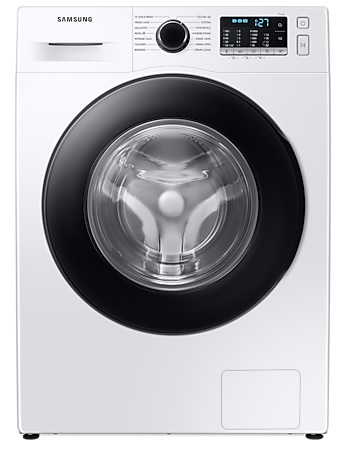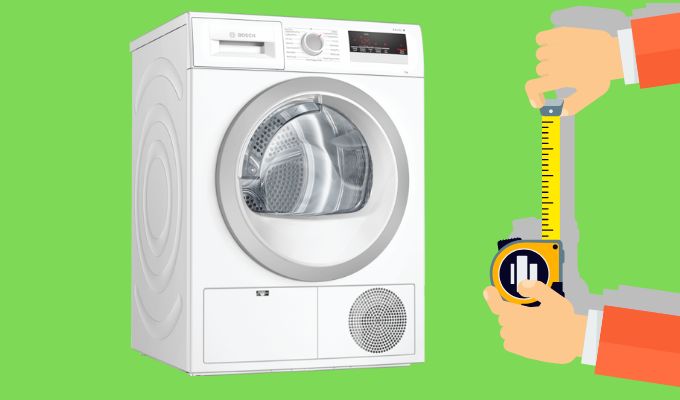When it comes to buying a new washing machine, there are lots of things to think about – energy efficiency, weight capacity, spin speed, and brand, to name a few. But one often overlooked feature is the dimensions of the washing machine itself.
Average Washing Machine Size
Due to some variability in washing machine dimensions, it is always advisable to compare the washing machine’s height, width, and depth (H, W, D) to the space where you plan to install the machine.
With that said, you’ll find that the typical sizes for a washing machine are 84-85cm in height, 60cm in width, and 55-60cm in depth. Of course, there will be slight differences between washing machines, so always check the specifications first to make sure your new machine fits where you want it to go.
Washing machines need at least 5cm of clearance in the back and 2.5cm on either side for pipe clearance, so keep that in mind when taking measurements. This clearance is to prevent drain and hose pipes from being crushed and to minimize the impact of vibrations travelling through walls and surfaces.
Are Washing Machines all the Same Height?
Yes, all washing machines in the UK are built no higher than 85cm. Some lower KG capacity washing machines may be slightly smaller, with a height of 82 – 84cm, but the majority of machines will be 85cm.
In most parts of Europe, the washing machine is installed in the bathroom. But in the UK, most of us will have our washing machine in the kitchen, as this is the closest place where the machine can be plumed into the water supply, drain, and electrical socket.
You’ll find that most kitchen worktops measure 90cm in height, leaving a comfortable 5cm gap between the top of the washing machine and the worktop.
If you’re short on floor space, you can save some by stacking your washing machine and tumble dryer together. You must first make sure you purchase a stacking kit that properly fits with both appliances.
Does Washing Machine Weight Capacity Effect Size?
The term “load capacity” will appear when comparing various washing machine models. It’s measured in kilograms and means the most laundry you can fit into one washing cycle. The higher the kg capacity, the heavier the load the machine can handle.
You may be thinking that an 8kg capacity washing machine will be smaller than an 11kg capacity machine, but more often than not, the dimensions will be identical, regardless of weight.
In some cases, the depth may be slightly bigger in a higher kg capacity washing machine, but the height and width will remain the same. This is because the drum size is bigger on a higher load capacity washing machine, so the machine’s outer case may need to be deeper to accommodate the larger drum.
Here’s an example of two premium washing machines, with different weight capacities.

- Model: Samsung Series 8 Washing Machine
- Load capacity: 11Kg (dry weight of clothes)
- Dimensions: H85cm x W60cm x D60cm
- Model: Samsung Series 5 Washing machine
- Load capacity: 7Kg (dry weight of laundry)
- Dimensions: H85cm x W60cm x D55cm
As you can see, there’s a massive 4kg difference between these machines, yet the height and width remain the same, with only a 5cm difference in depth.
We hope this guide on washing machine dimensions has been helpful. Remember, always measure the space where you plan to fit your machine first, and check the measurements against the dimensions of the machine you plan to buy.



